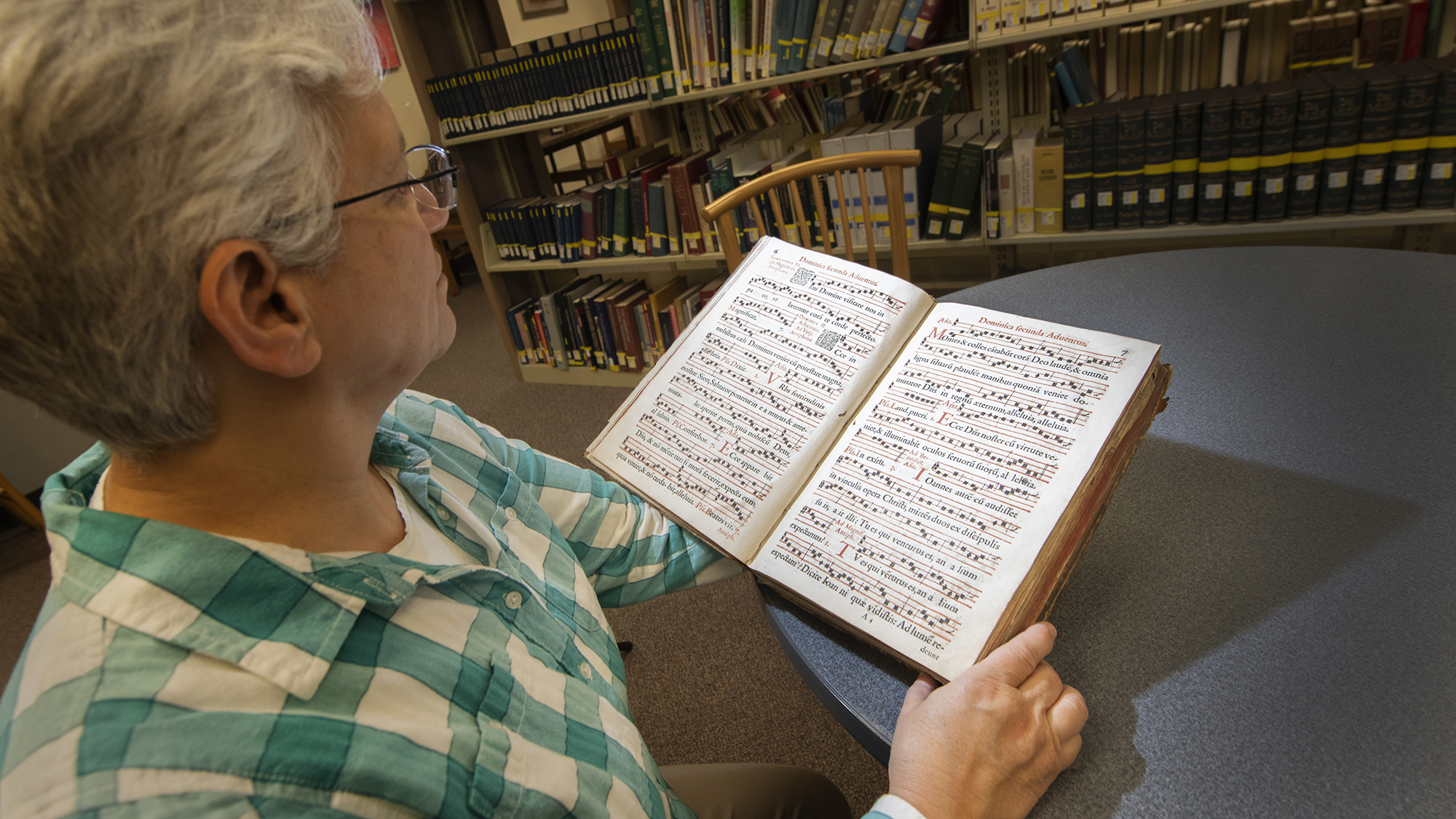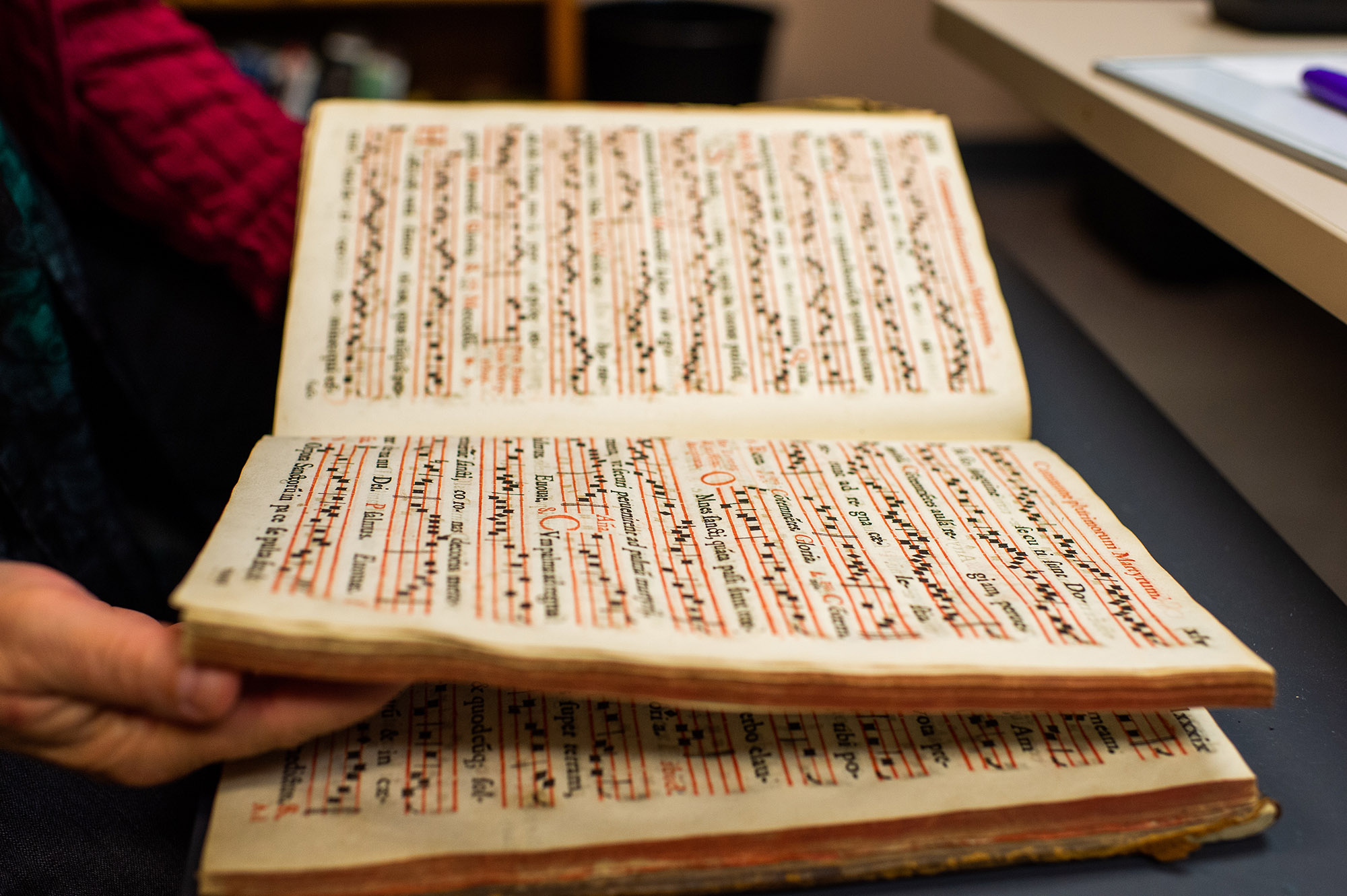
A 405-year-old tome of Gregorian chants — one of two known copies — is now part of the University of Nebraska–Lincoln’s Archives and Special Collections.
Donated by Karen R. Lusk in memory of Larry Lusk, her husband and founding dean of Nebraska’s Hixson-Lied College of Fine and Performing Arts, “Antiphonarium Romanum” was published in 1614 in Tournai, Belgium. The only other known copy is located at Yale University.
“It’s fascinating,” said Anita Breckbill, professor and music librarian. “I love the history of these books, and the feeling of the book or page going through many hands and having been meaningful to a group of people.
“It might have been floating around in Belgium for much of those 400 years, but now it’s in Nebraska.”
Intended for Roman Catholic Church services, music in the book dates back to the early Middle Ages. The printing reflects major reforms made by the Council of Trent, held in three parts between 1545 and 1563, which revitalized the church across much of Europe during the Renaissance Era.
“Quite specifically, it’s the Liturgy of the Hours rather than for mass,” said Peter Lefferts, professor of music history. “There is this day-long cycle of services called Hours, and actually the mass is one of the Hours —it’s the most important. But this is the music of the daily services, except for the mass.”
The book was given to Larry Lusk by Karen Lusk’s sister and brother-in-law, who lived in Belgium in the early 1970s. The brother-in-law was a lieutenant colonel in the U.S. Air Force at the time and stationed at Supreme Headquarters Allied Powers Europe, near Mons, Belgium.
“They were always looking for gifts to send us from there, and they went to antique stores where they knew they would not be duplicating anything we would have,” Karen said. “They purposely looked for old manuscripts, old music, old scientific instruments, whatever their interests were. They had their eyes out for things like this, and they knew this was something we would love to have.”

The book has cellophane tape on the binding and other pieces of paper inserted between pages.
“Another part of the story is that there’s plenty of evidence, including the tape and also these kinds of things stuck in it, that means this book was probably used steadily from then until the reforms of the Second Vatican Council of 1962-1964,” Lefferts said. “For a very long time, this book would have had great functional value. It has lived a long and useful life.”
Meant for choral singing, the book is divided into two parts — one for major church feasts, including Christmas and Easter, the second dedicated to saints.
Lefferts said the book was a wonderful gift for the university.
“It’s a very special item. The value is in its near uniqueness,” Lefferts said. “It’s a rarity, and yet in its own day, it would have been a very common item. It was meant to be widely distributed so that every parish had one. Now, they’re just gone, and so it’s neat that we have this.
“It is potentially something that a scholar would want to travel to Lincoln to look at and spend a couple of days with if they were interested.”
Karen Lusk said the university was a fitting place for the donation.
“I graduated from the University of Nebraska, and so did my sisters. We’re Nebraskans,” she said. “The undergraduate school that Larry went to and his graduate schools, each one was exceedingly important in his ultimate career, and they all would have been fine recipients. But this is where Larry’s life was. Plus, he was extremely interested in music history. I just felt this is where it should be.”









